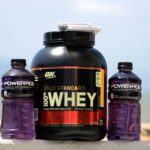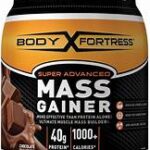Overview of muscle load
Muscle strain, tendons strain, or even a muscle tear refers to damage to a muscle or its attached tendon. Excessive stress can be placed on the muscles during activity.
Muscle damage can manifest in the form of tears (partial or complete) in the muscle fibers and tendons that attach to the muscle. Muscle tears can also damage small blood vessels, and irritating nerve endings in the area can cause localized bleeding, bruising, and pain.
Symptoms of muscle tightness include:
- Swelling,bruising,or redness from injury
- Rest pain
- Pain when using a particular muscle or a joint associated with that muscle
- Muscle or tendon weakness
- I can’t use my muscles.
when to seek medical help
Call your doctor if you have severe muscle damage (or if home remedies don’t relieve him within 24 hours). People who hear a popping sound from an injury, cannot walk, or have significant swelling, pain, fever, or cuts should be evaluated in a hospital emergency room.

exams and tests
Your doctor will take your medical history and do a physical examination. The examination is important to determine whether the muscle is partially torn or completely torn. This may require a much longer healing process, possible surgery, and more complex recovery.
X-rays and laboratory tests are often not needed unless there is a history of trauma or signs of infection.
Muscle tension treatment self-care can be done at home
Any degree of swelling or local muscle bleeding (bleeding from a ruptured blood vessel) is best treated early by applying ice packs and keeping tight muscles stretched. Once the swelling has subsided, heat can be applied. However, applying heat early can increase swelling and pain.
Note:
Do not expose bare skin to ice or heat. Always use a protective cover, such as a towel, between ice or heat and your skin. Take non-steroidal anti-inflammatory drugs (NSAIDs) such as naproxen or ibuprofen to reduce pain and improve mobility.
Do not take NSAIDS without consulting your doctor if you have a history of kidney disease or gastrointestinal bleeding or if you are also taking blood thinners like Coumadin.
In this case, you are taking acetaminophen; it is safer. Acetaminophen can help relieve pain, but it does not reduce inflammation.
Protection, rest, cooling, compression, and elevation (known as the PRICE formula) can help affected muscles. The method is as follows.
First, remove all shrunk clothing, including jewelry, from the area of muscle tension. So:
Protect tight muscles from further damage.
Relax, stiff muscles. Avoid activities that cause tension or other painful activities.
Cool the muscle area (20 minutes every hour while awake). Ice is a highly effective anti-inflammatory and analgesic. Applying a small ice pack, such as a frozen vegetable pack or frozen water in a foam coffee cup, to the affected area may help reduce inflammation.

Compression can be applied gently with Ace or other elastic bandages that can provide support and reduce swelling.
Elevate the affected area to reduce swelling. For example, it supports tense leg muscles when sitting.
Activities that aggravate muscle pain or affect the affected area are not recommended until the pain is significantly improved.
Medical care
Treatment is similar to home treatment. However, doctors can also determine the extent of muscle or tendon damage and whether crutches or splints are needed. Doctors can also determine whether people need to limit activity or take time off from work and whether rehabilitation exercises or physical therapy may be needed to help them recover.
Prevent injuries with daily stretching. Please consult your doctor before starting an exercise program. Stretch after training.
Establish a warm-up routine before strenuous exercises, such as: Walking gently in place for a few minutes.










